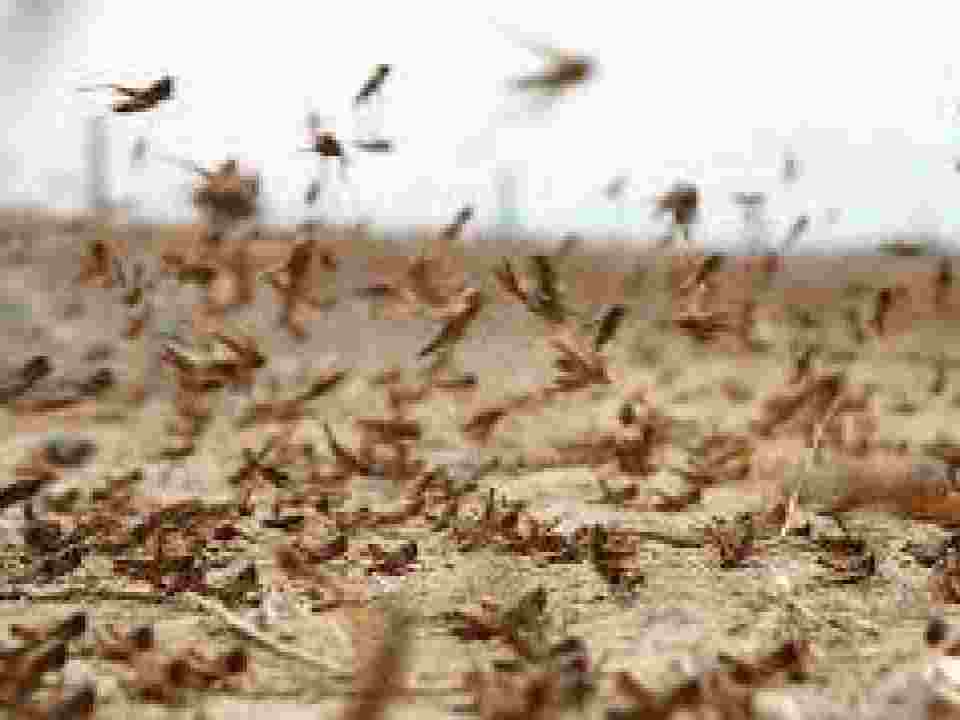Description
In recent years, countries like India, Pakistan, and several East African nations have faced devastating crop losses due to large-scale locust invasions. The 2019–2020 infestation, described as the worst in over two decades, brought renewed attention to the inadequacies of traditional locust control techniques. While chemical pesticides have long been the default response, their environmental and agricultural consequences have prompted scientists to explore more sustainable alternatives notably, strategies that interrupt the biological processes behind swarming.
Understanding Locust Swarming And Its Threat
Locusts are infamous for their ability to switch from a solitary existence to a highly social, destructive phase. In the gregarious phase, they form massive swarms that can travel over 150 km a day and devour entire fields, threatening food security across multiple regions. This transformation is not random; it is triggered by specific biochemical signals, primarily pheromones released during feeding. Interrupting these signals can potentially prevent swarms from forming.
The Science Behind Locust Pheromones
The key chemical compound responsible for attracting locusts into groups is 4-vinylanisole (4VA). Produced by the insects' hind legs after feeding, 4VA prompts nearby locusts to congregate. As they rub against each other, their serotonin levels rise, triggering further social behavior and expanding the swarm. Thus, blocking 4VA production or action presents a viable method to stop this cycle at its origin.
Enzymes And Genes Behind Swarming Behavior
The production of 4VA relies on the conversion of 4-vinylphenol (4VP) a non-aggregating compound into the active pheromone. This conversion is facilitated by two enzymes: 4VPMT1 and 4VPMT2. The process is initiated by phenylalanine, an amino acid commonly present in plant-based diets. Disabling the gene that encodes 4VPMT1 has been shown to halt the gregarious transformation, offering a genetic pathway for swarm control.
Targeted Disruption Using Small Molecules
Researchers have discovered that 4-nitrophenol (4NP) binds strongly to the 4VPMT enzymes, thereby preventing the production of 4VA. By disrupting this enzymatic activity, 4NP effectively blocks locusts' ability to aggregate. This presents a highly targeted strategy to manage locust outbreaks without resorting to broad-spectrum pesticides.
However, the use of 4NP raises environmental safety concerns. Its toxicity and persistence in soil and water ecosystems make it unsuitable for widespread application without stringent regulation.
RNA Interference: A Cleaner Solution
To overcome the environmental drawbacks of 4NP, scientists are exploring RNA interference (RNAi) as a cleaner, gene-targeted solution. RNAi technology can be used to silence the genes responsible for producing 4VPMT enzymes, thus blocking 4VA synthesis from the root. Unlike chemical agents, RNAi does not leave toxic residues and can offer precise, long-term suppression of swarming behavior.
Traditional Vs Modern Locust Control Practices
Historically, human societies have resorted to rudimentary methods like noise, fire, and physical barriers to repel locusts. With the onset of modern agriculture, chemical pesticides became the dominant strategy. However, the limitations of these chemicals such as reduced efficacy over time and environmental toxicity were evident during the 2019–2020 outbreaks, which overwhelmed conventional containment efforts.
A Comprehensive Strategy For Locust Management
A forward-looking, integrated approach to locust control may involve a combination of the following steps:
Deploying synthetic 4VA to lure locusts into traps.
Spraying 4VA across fields to disrupt pheromone-driven aggregation.
Monitoring locust activity using biosensors capable of detecting 4VA.
Releasing genetically engineered locusts incapable of entering the gregarious phase.
Combining small-molecule enzyme inhibitors (like 4NP) with environmentally friendly biopesticides.
This integrated pest management (IPM) framework offers a more effective and sustainable method to tackle locust swarms without the environmental fallout of traditional pesticides.
Welcome to Notopedia.com, your free learning platform that caters to the diverse needs of students and aspirants across a spectrum of entrance exams and educational endeavors. Whether you're preparing for highly anticipated exams like CAT, NEET, JEE Main, or bank job vacancies, our platform offers a wealth of resources to guide you towards success. Stay up-to-date with the latest exam dates, announcements, and results for various government recruitment exams, including SSC CGL, CHSL, NDA, and UPSC. Explore comprehensive study materials, sample papers, and exam patterns to hone your skills and boost your confidence. From important dates like CBSE Class 10 and 12 date sheets to exam-specific information like JEE Main application form date, we cover it all. Notopedia.com is your go-to source for everything from admissions and admit cards to scholarships and college information. Whether you're aiming for a career in defense, government, banking, or higher education, our free learning platform equips you with the knowledge and resources you need to excel. Join us in your educational journey and unlock a world of opportunities, guidance, and comprehensive support.
For more Updates and Information - Visit Notopedia's Bulletin Board
For Latest Sarkari Jobs - Visit Notopedia's Sarkari Jobs Section
For access to more than 20,000 Colleges - Visit Notopedia's College Section
For School Studies and Exams Preparation across 14 Boards - Visit Notopedia's School Section
For Comprehensive Preparation of Sarkari Job Exams - Visit Notopedia's Sarkari Exams Section










